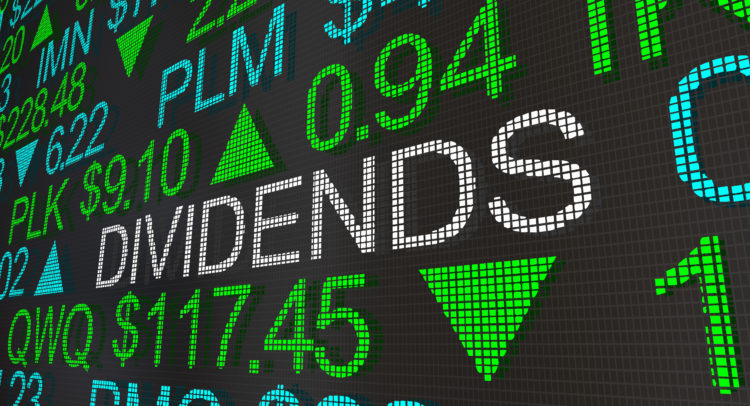Lately, I have shared various investment ideas among the consumer staples sector, as these stocks are generally less risky and easier to predict. For instance, I recently discussed Procter & Gamble (NYSE: PG) and Colgate-Palmolive (NYSE: CL), both of which have grown their dividend for 60+ years. In this article, I am going over two companies in the packed foods space – Kellogg Company (NYSE: K) and Mondelez International (NASDAQ: MDLZ). They own some of the most iconic recession-resistant consumer brands, from Pringles and Eggo to Toblerone chocolates and Oreo. That said, I find both companies quite overvalued against their growth prospects.
Accordingly, I am neutral on both names.
Are Kellogg & Mondelez Going to Perform Well in the Current Environment?
Due to Kellogg’s and Mondelez’s brands being household favorites, they tend to generate robust sales even during the harshest economic environments. This comes with unique advantages. For instance, investors are nervous about whether different companies can keep up with the highly-inflationary environment we are currently experiencing. Yet, Kellogg and Mondelez are quite well-positioned to withstand this crisis.
Most of their products, such as cereal, are everyday necessities/consumables whose demand is highly inelastic. Thus, the two companies can increase their prices at a pace that is equal to or higher than inflation without undergoing any meaningful decline in sales volumes.
Are Kellogg & Mondelez Worthy Dividend Picks?
As I mentioned, companies in the sector, like Kellogg and Mondelez, tend to feature impressive dividend-growth records due to their ability to produce relatively stable cash flows under various market environments.
Kellogg’s Dividend Prospects
Kellogg has increased its dividend for 17 consecutive years and has never cut it as far as its public data goes back to 1985. That said, the company’s growth has lagged over the past several years. Sure, its brands may continue to generate robust sales, as mentioned earlier, but this doesn’t translate to growth.
Sales, in fact, are currently hovering at the same levels they did roughly 10 years ago. Accordingly, dividend growth has slowed down significantly lately. Kellogg’s five-year dividend-per-share CAGR stands at a meager 2.5%.
Nevertheless, Kellogg and Mondelez should be able to weather the ongoing, highly-inflationary environment rather well. Evidently, analysts expect the company to deliver earnings per share of $4.14 this year, implying stable performance year-over-year.
With a payout ratio of nearly 60% and stagnant revenues, it makes sense that dividend growth has slowed down. Overall, I don’t see how Kellogg could start reaccelerating dividend growth without its payout ratio approaching threatening levels over the next decade, as the company lacks any meaningful growth catalysts.
Mondelez’s Dividend Prospects
Mondelez appears to have grown its dividend for eight consecutive years. However, this is somewhat misleading, as the dividend cut only reflected the split from The Kraft Heinz Company (NASDAQ: KHC) at the time. Excluding this matter, the company has actually never cut its dividend since 2001. Dividend-per-share growth has been quite faster than that of Kellogg since the “cut,” with Mondelez’s five-year DPS CAGR standing at 13%.
Similar to Kellogg, analysts also expect Mondelez to deliver stable results year-over-year, with consensus earnings-per-share estimates pointing toward $2.89. This implies a payout ratio of just over 50%, which may allow the company to continue growing the dividend relatively rapidly.
However, unless Mondelez manages to grow organically in the coming years, its pace of dividend growth will likely have the same fate as that of Kellogg’s.
I am particularly concerned about this, as both Kellogg and Mondelez should have a hard time growing organically with the U.S. Dollar at such strong levels, considering a large chunk of their sales is sourced internationally.
What is the Target Price for Kellogg Stock?
As far as Wall Street’s sentiment goes, Kellogg has a Hold consensus rating based on nine Holds and two Sells assigned in the past three months. At $73.73, the average Kellogg stock forecast implies 2.3% upside potential.

What is the Target Price for Mondelez Stock?
In the case of Mondelez, the stock has a Strong Buy consensus rating based on 14 Buys and one Hold assigned in the past three months. At $68.87, the average Mondelez stock forecast implies 20.5% upside potential.

Are Kellogg & Mondelez Shares Actually Worth Buying?
As I mentioned at the begging of this piece, Kellogg and Mondelez could be ideal picks these days due to their capability to report solid results during challenging market environments like the one we are currently experiencing. That said, I believe both companies will have a hard time growing their dividends at a meaningful pace over the next decade. Mondelez has grown its dividend rapidly, but its payout ratio is gradually moving higher as well.
Finally, while analysts forecast noteworthy upside potential in the case of Mondelez, I believe both stocks are quite overvalued. At forward P/Es of 17.3x and 19.7x (based on aforementioned estimates), both Kellogg and Mondelez are currently trading at a significant premium.
This is the case, especially considering they should hardly see earnings-per-share growth north of the mid-single digits over the medium term and that investors should require a higher equity risk premium in these securities with interest rates on the rise.
















